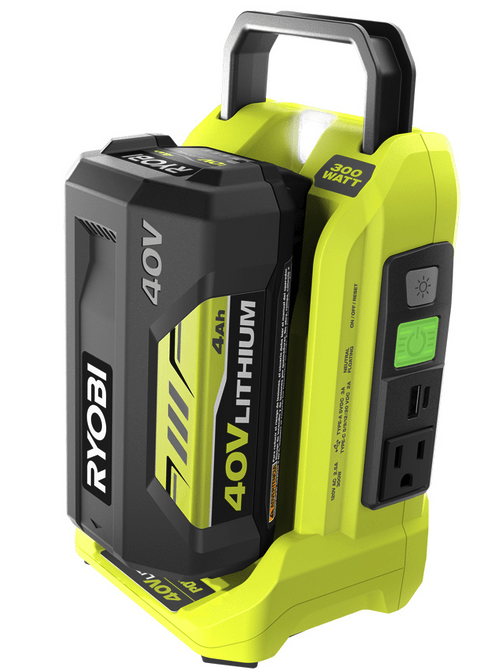Shortly after the 2nd Russian invasion of Ukraine, electricity in Ukraine was weaponized.
Ukraine’s government is now scrambling to increase domestic energy production, connect to Europe’s power grid, keep the lights on, and reclaim their land.
Because electricity in Ukraine is precarious at the moment, generating electricity and storing back-up power with solar microgrids can provide Ukrainains with greater energy security. Solar microgrids are potent tools in disaster and war zones because they don’t need fuel or the grid, transport easily, set up quickly, and operate silently.
More microgrids providing renewable electricity will save lives and help protect Ukraine’s indepence.

Ukraine’s electricity and independence are intertwined
Vladimir Putin has a toolbox full of tactics he applies to atempt controlling other countries. In some places it’s violence, cyber warfare, and military occupation. In others, he plants information and political leaders. Perhaps most broadly, Putin leverages infrastructure and energy access.
He’s employed almost all of these tactics in Ukraine. And yet, due to his attempts to control Ukraine, Ukrainians are less connected to him than they ever have been.
Ukraine’s Revolution of Dignity
It’s shocking to learn that your president secretly built a 2,000-animal zoo at their house…but then it’s less surprising to discover that they’ve also been stealing from everyone.
Well, that’s what happened with Ukraine’s 4th President, Viktor Yanukovych (the winkster below).

Although he later tried to quell Ukrainian anger over his zoo by explaining, “I supported the ostriches. What’s wrong with that?”, Victor was profoundly corrupt.
Victor stole $100 billion from his people. He was also Vladimir’s puppet.
In 2013, Victor tried pulling Ukraine out of agreements with Europe that Vladimir opposed but had broad support among Ukrainians. This sparked months of protests in Kyiv called the Революція гідності or “Revolution of Dignity.” In February 2014, clashes between riot police and protestors left 108 protests and 13 police dead, leading to Victor fleeing to Russia.

The day after Victor arrived in Russia, Vladimir invaded Ukraine’s Crimean peninsula. Since then, Ukraine’s military has fought Russians occupying their land while Russia’s coal, gas, and nuclear supplies have provided much of the electricity in Ukraine.
The cognitive dissidence of this relationship made many Ukrainians uncomfortable. But until recently, progress had been slow in freeing the country from Vladimir’s energy influence.
The fight to control electricity in Ukraine
On February 24th, 2022, Ukraine planned to independently power all of its citizens for 3 days. It would have been the first time they didn’t use any electricity produced in Russia or Belarus.
Assuming a successful test, Ukraine planned to begin transitioning the country to be purely powered with energy generated domestically and flowing from a new interconnection with Europe’s power grid.
Ukraine’s government believed that as early as summer 2022, they’d update their grid infrastructure and stockpile enough coal to cut the chord with Vladimir.
Instead, Russia invaded Ukraine on February 24th, forcing Ukraine to immediately island its grid and begin connecting with Europe. This makes Ukraine’s electricity supply fragile until there’s a secure interconnection with Europe and stability in the country.
Russia is weaponizing electricity in Ukraine
Russia cut off the internet and electricity in much of Ukraine just before invading. They then quickly moved to control Ukraine’s domestic energy production.
In the first weeks of the war, Russia captured multiple hydroelectric and nuclear power plants, including Zaporizhzhia, the largest nuclear plant in Europe. Zaporizhia’s staff continue running the plant at gunpoint, preventing a nuclear meltdown.
So far, Ukraine’s grid has held up better than expected. Still, over 800,000 Ukrainians don’t have power while I’m writing this, and Russia will continue making it challenging for Ukraine’s grid to meet demand.
NASA satellites show a dramatic reduction of lights within the country once the invasion started. The dark nights are caused by power outages and the fear of light attracting Russian attention. At night in the besieged city of Mykolaiv, the hospital operates in the dark night to avoid being shelled.
It’s a necessary measure. Russian soldiers are committing war crimes. They’re intentionally targeting civilians in hospitals, shelters, and government facilities.
In the city of Mariupol, Russia bombed a maternity clinic and a shelter with 1,300 civilians on the inside and “children” written in Russian all around the outside. Russian troops encircled the city in early March. Since then, residents have had almost no access to outside food, water, fuel, or electricity.
Yet some citizens and the Defenders of Mariupol remain.
Ukrainians need to produce electricity in Ukraine
While the Ukrainian government works on connecting the grid to Europe, the people of Ukraine need to take matters into their own hands. Once again. This time by producing their own electricity.
Producing electricity in Ukraine reduces Vladimir’s sphere of influence and helps secure Ukraine’s independence. It also saves the energy available on the grid for citizens and soldiers who need it and can’t produce their own. And ultimately, producing electricity eliminates the risk of depending on someone else for warmth, cooking, and communication.
Across Ukraine, you can buy solar microgrids that collect and store energy from the sun. These unique tools allow civilians to power devices, homes, and businesses without connecting to the grid. They also enable Ukraine’s warfighters to independently power their units.
Renewable microgrids powering Ukraine’s warfighters
Supply lines have always dictated warfighters’ stealth and reach.
In modern warfare, gas and oil are among the most common and crucial resources transported in supply convoys.
Over 3,000 U.S. soldiers and contractors died transporting fuel in warzones across Iraq and Afghanistan. So the U.S. military decided to “electrify its tactical edge.” Meaning that they’re moving to a fully electric vehicle fleet and bases and mobile units powered by renewable microgrids.
The ability to electrify remote outposts and mobile units is critical for all militaries and soldiers. The more self-sufficient Ukrainian warfighters are, the better they can protect themselves and keep a tactical advantage.
Many renewable microgrids are portable, and they don’t use fuel or create noise, making them effective energy sources while on reconnaissance, guarding bases, or securing new territory.
Ground Renewable Expeditionary Energy Systems (GREENS) are designed for warfighters and used by the U.S. Marines. Each one produces up to 24 hours of 300W power by collecting 8 hours of sunlight. UEC Electronics, the manufacturer, says GREENS require no maintenance and only 20 min to set up. Although this video shows 2 of them constructed in less than 12 min.
While Ukraine evolves into a fully energy-independent country, Ukraine’s warfighters need reliable electricity to stay alive and succeed on the battlefield. Solar microgrids can provide a powerful tactical advantage.
Citizens can generate electricity in Ukraine with solar microgrids
In late February, Vitali Klitschko, Kyiv’s mayor and former world heavyweight champion boxer, set up emergency generators around the city in preparation for the war. They’ve undoubtedly helped many residents during the city’s outages.
But gas generators’ depend on fuel, need to run outside, and are noisey, which makes them impractical for many civilians in war zones. Some people can’t or won’t leave their homes, while others cannot settle in one place. Renewable microgrids can provide essential lifelines for Ukrainians in these situations. Providing light, warmth, cooking, and communication.
Portable and home solar microgrids can help Ukrainians with different needs generate their own electricity.
Portable solar microgrids
With so many people on the move in Ukraine, portable solar microgrids, a type of renewable microgrid, can provide a lifeline. They allow you to carry an endless supply of energy and generate electricity wherever you are. Enabling you to stay in contact, track ongoing developments, and power crucial devices like lights, heaters, stoves, and phones.
The Jackery Solar Generator 1500 is ranked as the best portable solar microgrid of 2022 by Consumer Reviews and Tech Radar.

Its battery provides over 1500Wh of power, enough to run a 60-watt cooler for over 20 hours, and gets charged by the solar panels in 5 hours. The whole microgrid weighs around 40 lbs. and costs $2900.
Since 2009, Goal Zero has built high-quality portable power banks and renewable microgrids.

There’s an astounding range of portable Goal Zero solar microgrids. The least powerful one costs around $400 and has 187Whs of battery storage, the most powerful offers 6000Whs of storage for close to $7,000.

The RYOBI 300W battery generator is light, affordable, and solar-chargeable. Making it a valuable tool if you have to move frequently or suddenly and can’t carry heavy equipment. The battery generator is only $80 and weighs 2.3 lbs., but it produces enough electricity to power a phone, radio, or heated blanket.
These portable renewable microgrids are also more versatile than gas generators because they can charge the battery and power devices with a power outlet or solar panels.
Solar microgrids for Ukrainian homeowners
Before the war, around 12,000 Ukrainian homes were powered by solar systems. Some of those solar systems are connected to batteries, creating microgrids that can provide 24/7 power and supply electricity to the grid.
Ekotechnik is a Ukrainian renewable energy company that provides home-solar microgrids. Ekotechnik’s website has a range of solar and microgrid products to choose from.
You can order online or over the phone at +38 (067) 524-83-36.
Electricity in Ukraine going forward
Agonizingly, this war appears that it could go on for years. For survive and thrive, Ukraine and Ukrainians need energy independence as quickly as possible. Renewable microgrids are key tools for this transition that also will help improve life in Ukraine today.
This war has clarified how important it is for each of us to power life with clean energy. We enable dictators like Vladimir the longer we buy gas, coal, and oil from them.
Germans got the message. 1/3 of their energy currently comes from Russia, but demand for home solar systems has never been greater. It has increased significantly since the Russian in invasion of Ukraine.
How you can help Ukraine

Here are a few ways to support Ukraine’s energy transition and independence…
Supply Ukrainians in need
Meest, meaning bridge in Ukrainian, has long been a leading delivery service between former Soviet Union countries and much of the world.
The humanitarian aid page on Meest’s website is an excellent source for updated details on what humanitarian aid they’re shipping to Ukraine and what you can contribute.
They have continued their standard international delivery service to Ukrainians with stable addresses and send aid packages to where they can be distributed to those in the most need.
Hire Ukrainians
Need to make a hire and want to expand your talent pool? Take a look at available remote Ukrainian workers and post job openings on EmployUkraine.org.
Support journalists like Anastasiia Lapatina
Veteran Ukrainian journalist Anastasiia Lapatina gives an intimate view into what it’s like to report on war as it comes to your hometown.
Follow Anastasiia on Twitter @lapatina, and other Ukrainian reporters to help shine a light on the war’s impact.
Share stories of renewable microgrid users
It’s Electric Island’s mission to highlight how clean, renewable energy and microgrids give us independence and power life around the globe.
Do you have a story, service, or piece of advice that can help Ukrainians navigate energy independence? Send it to ElectricIslandsBlog@gmail.com to share it with our community.
